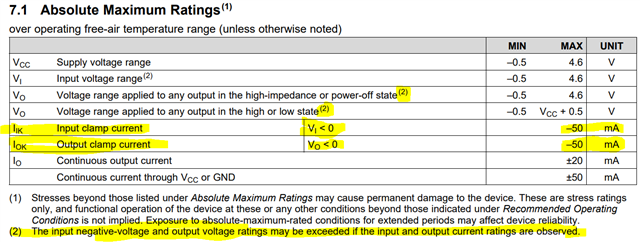Other Parts Discussed in Thread: SN74LXC1T45, SN74LVC1G07
Hi! I was wondering if the open drain buffer in the title can have its output be connected to 5V via a 10kohm pull-up resistor. I'm trying to create a level shifter from 1.5V to 5V. According to the datasheet, the absolute maximum ratings for Vo when high-impedance is 4.6V, less than the output side voltage supply. However the datasheet has a footnote stating that going beyond the limits is allowed if current is monitored, which I believe the 10kohm should satisfy. However, there's another footnote saying that going beyond the recommended operating conditions does not imply functional operation. This is quite vague, so I don't know if this will actually work.


